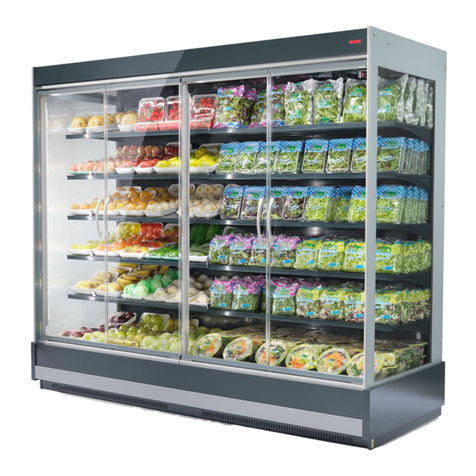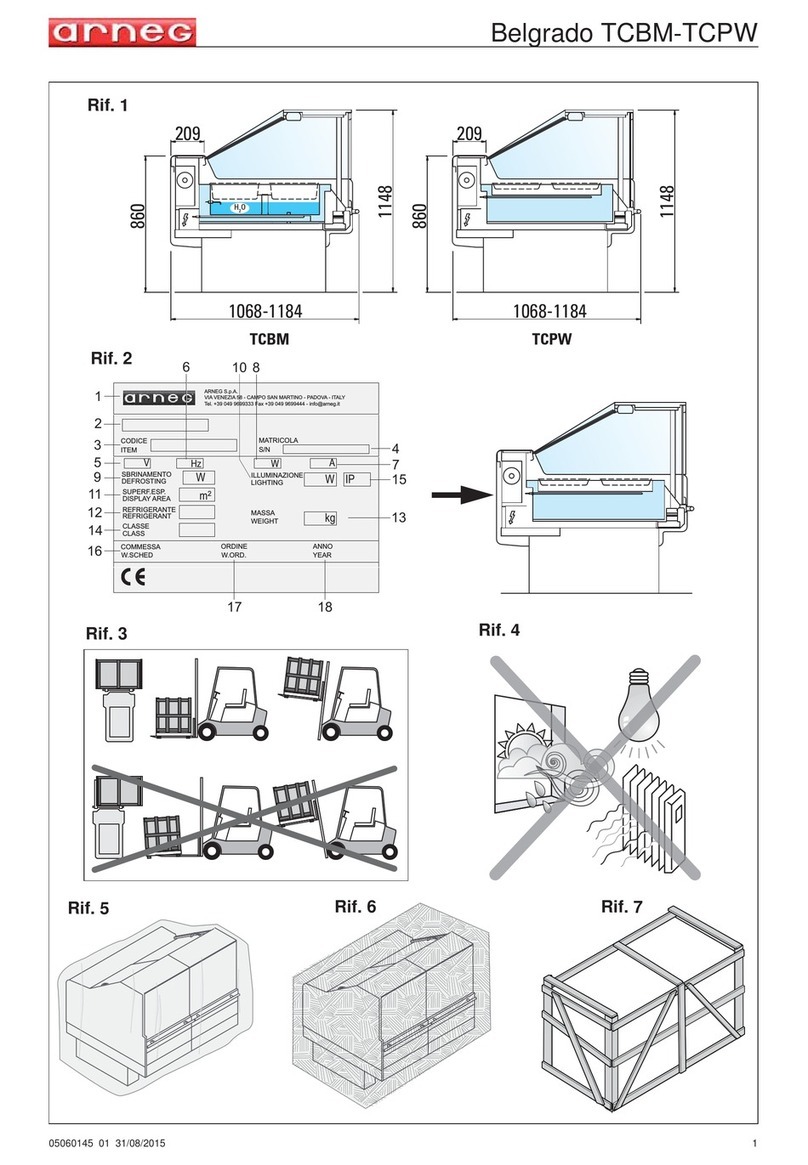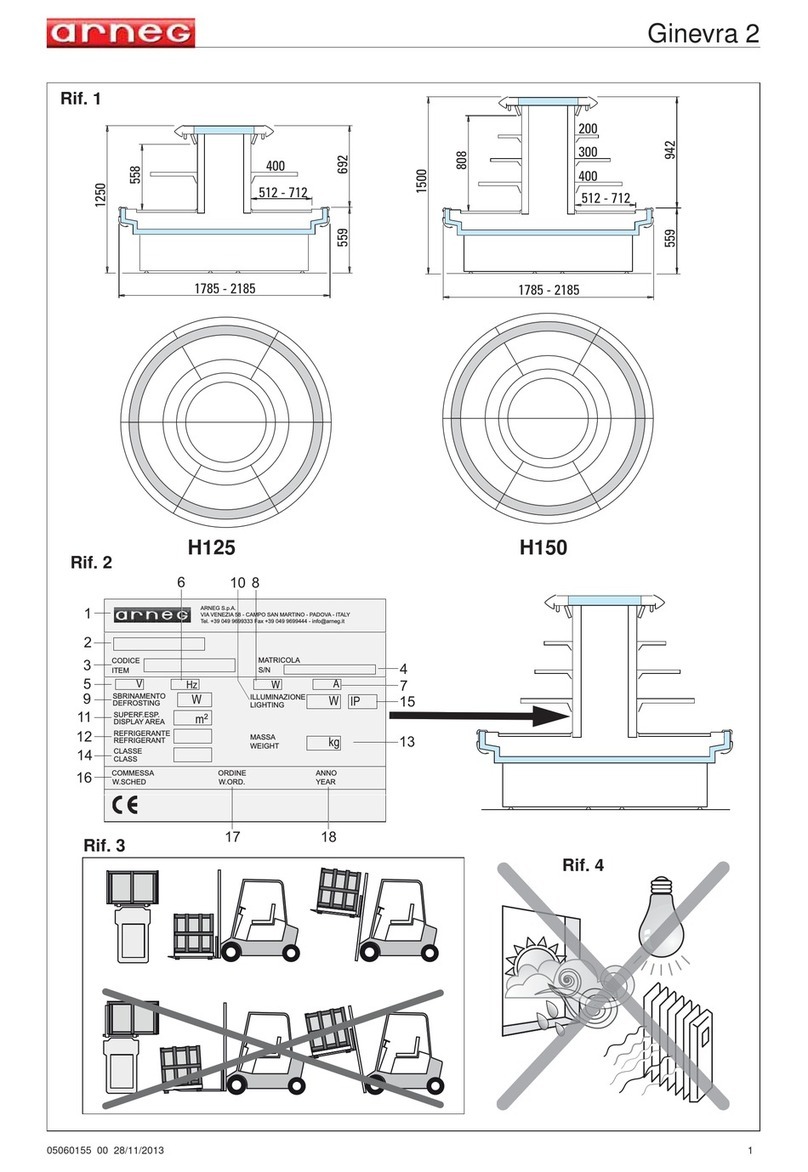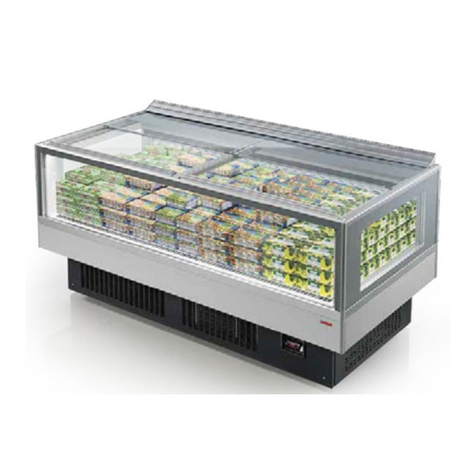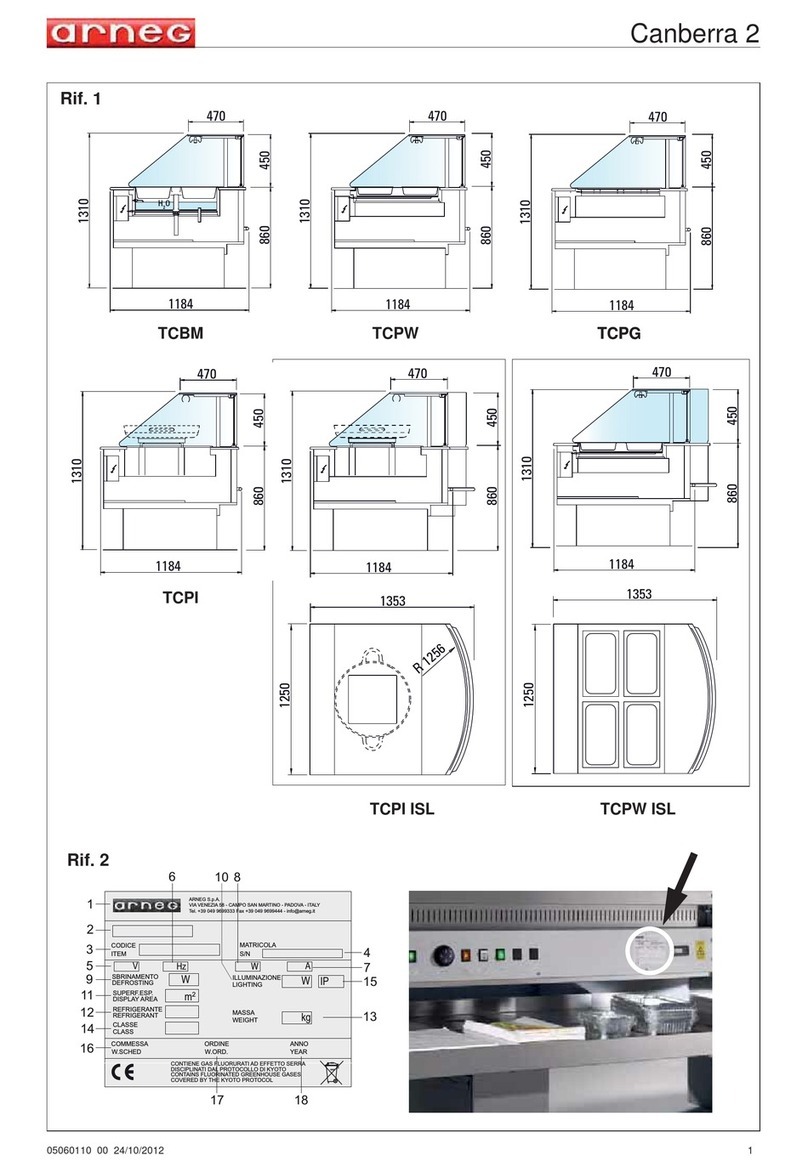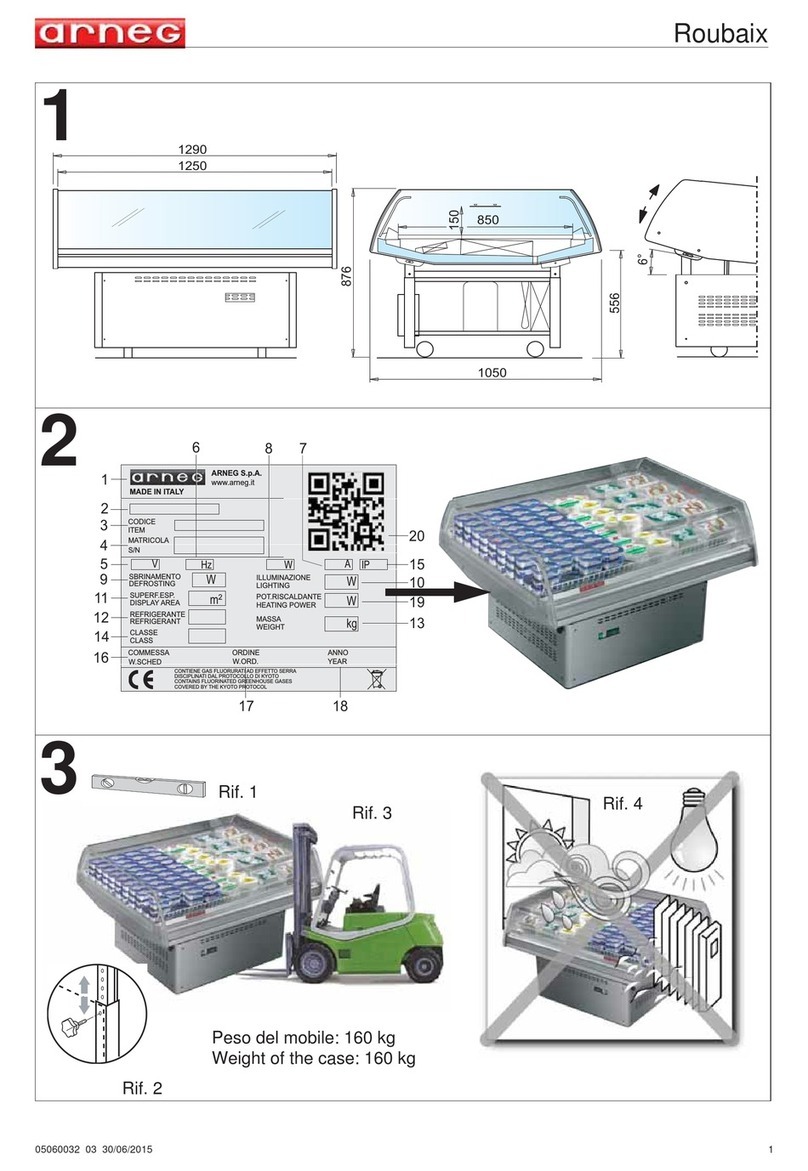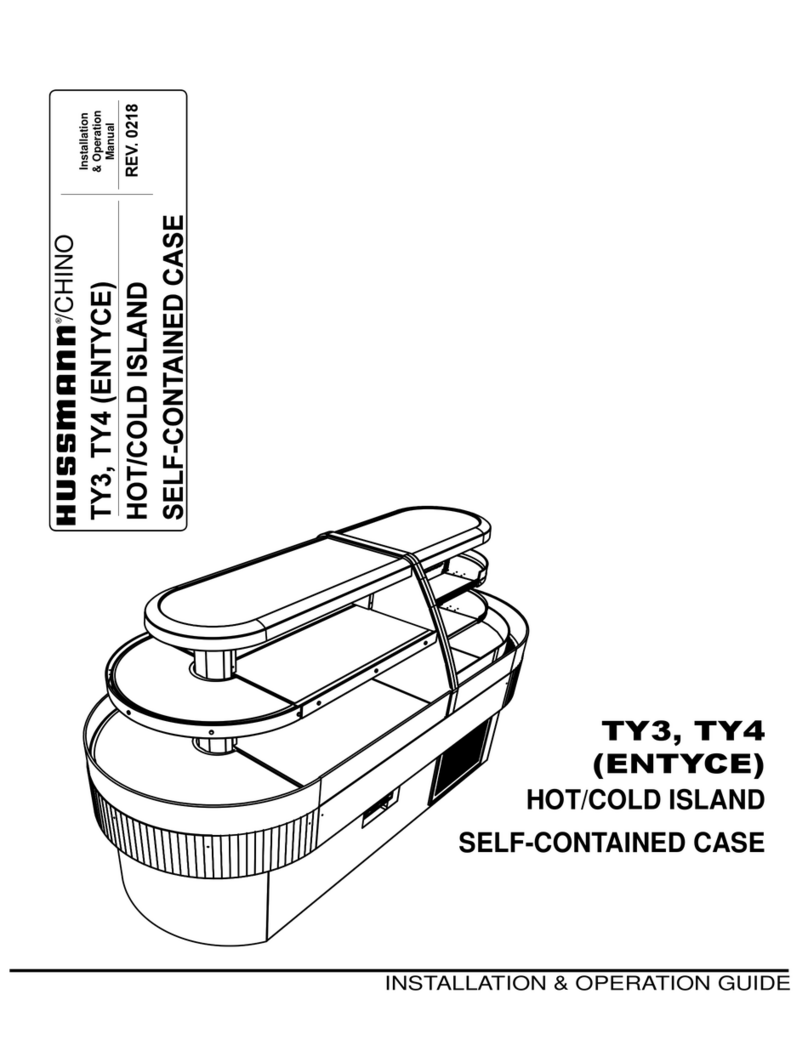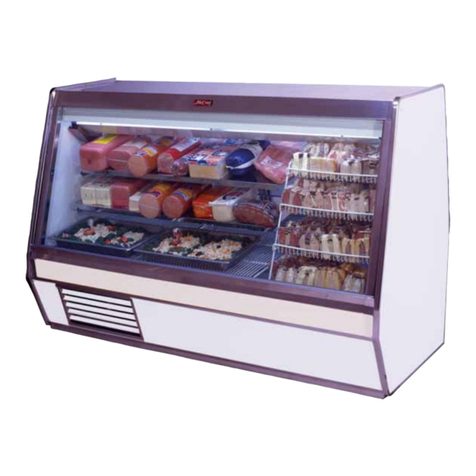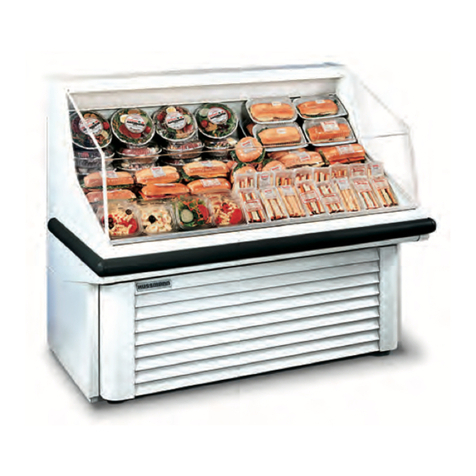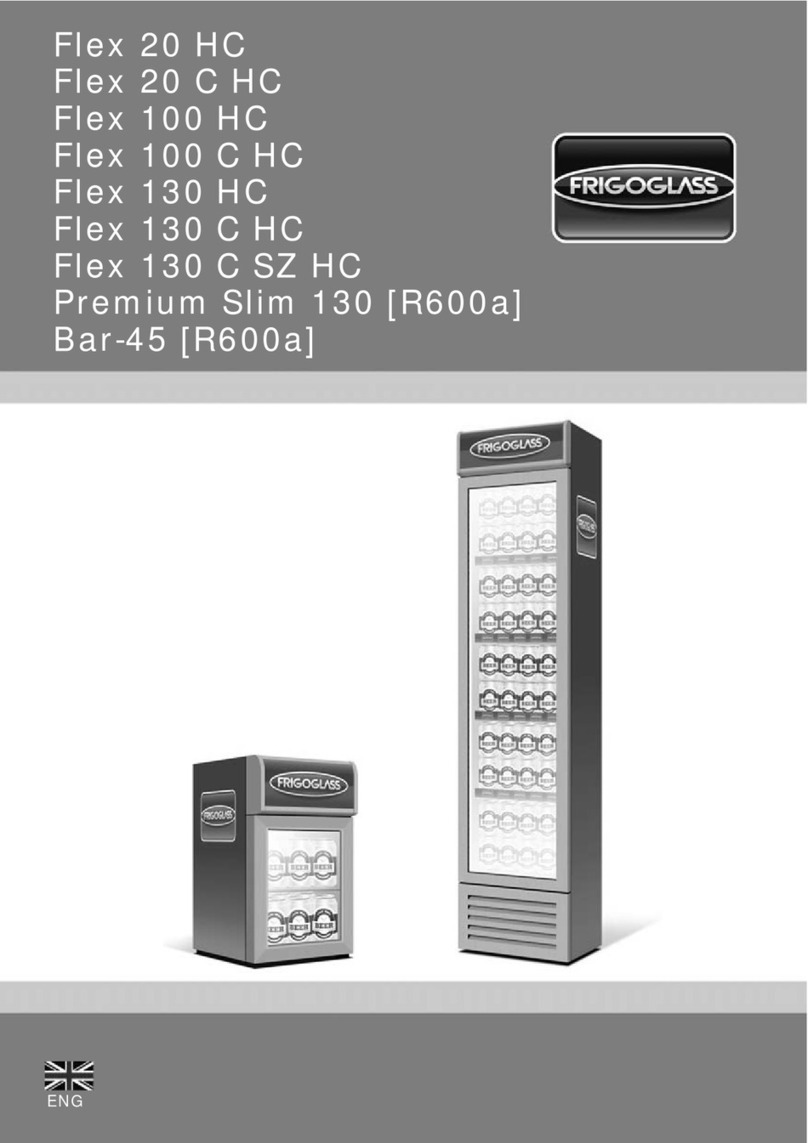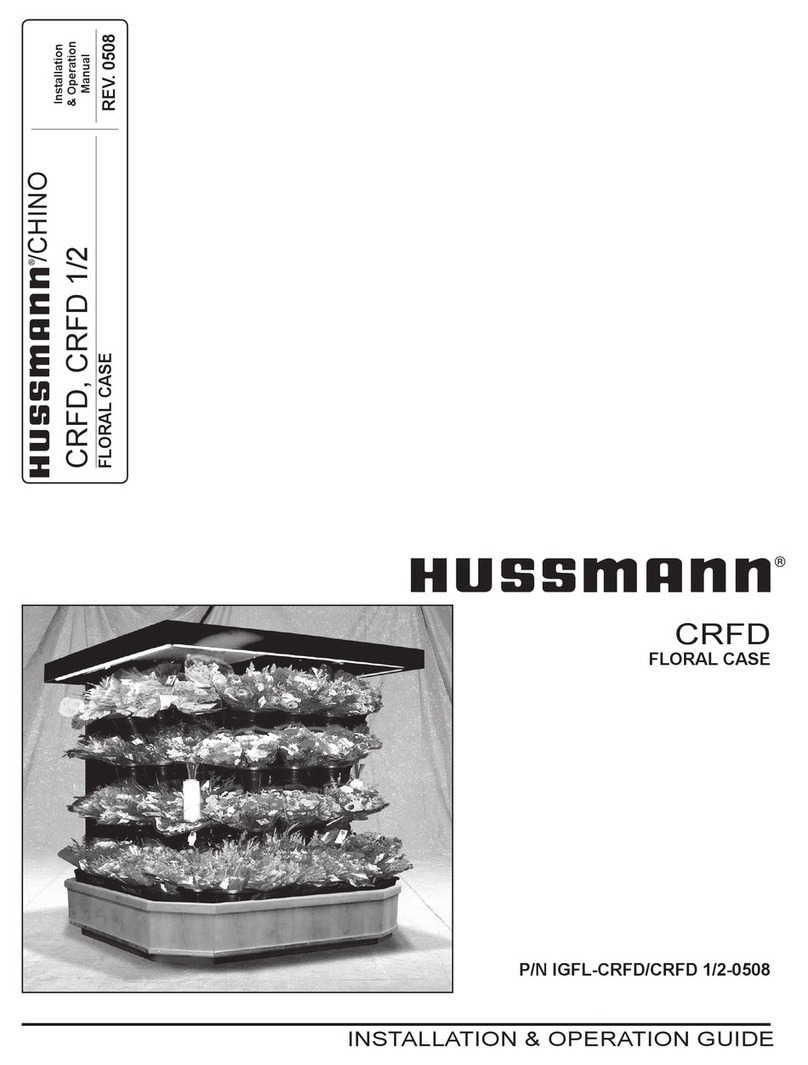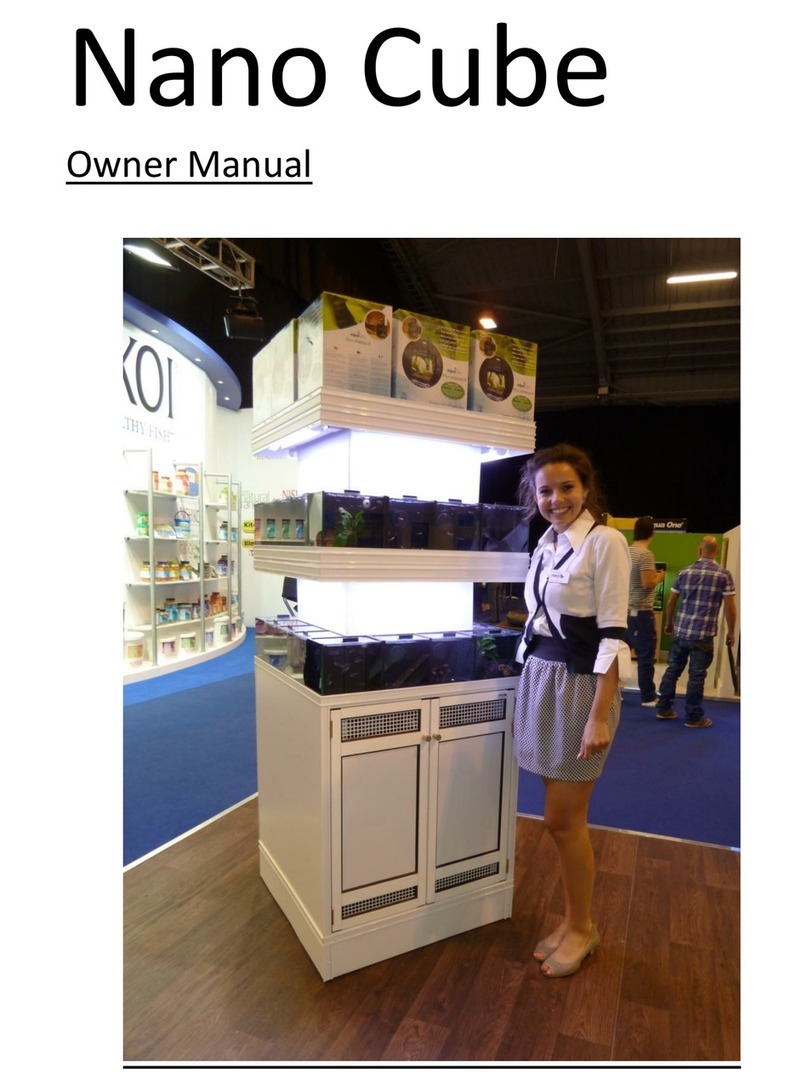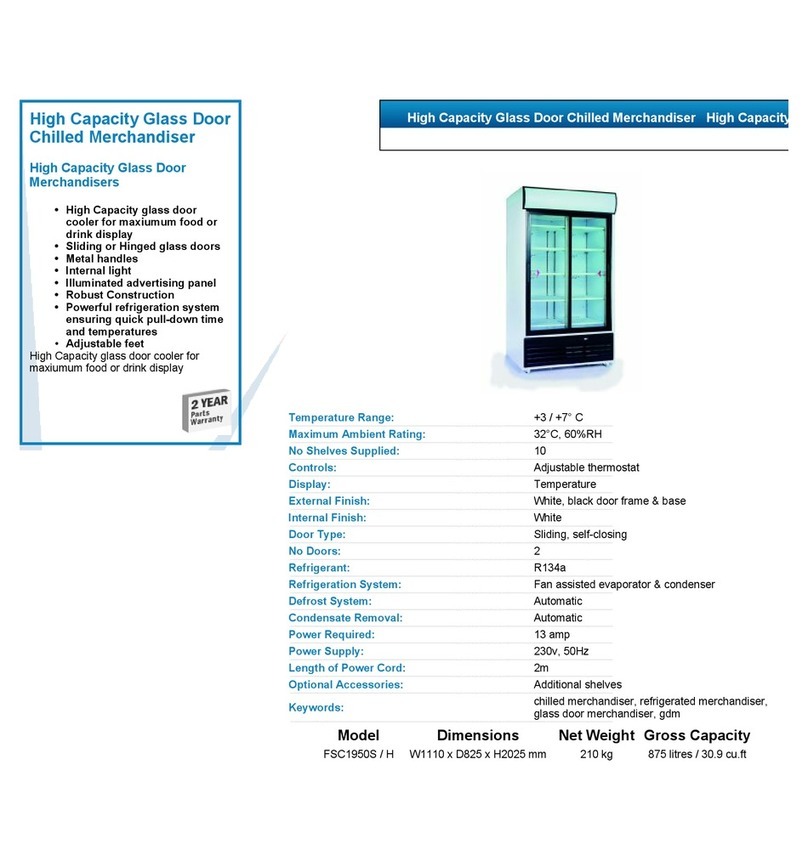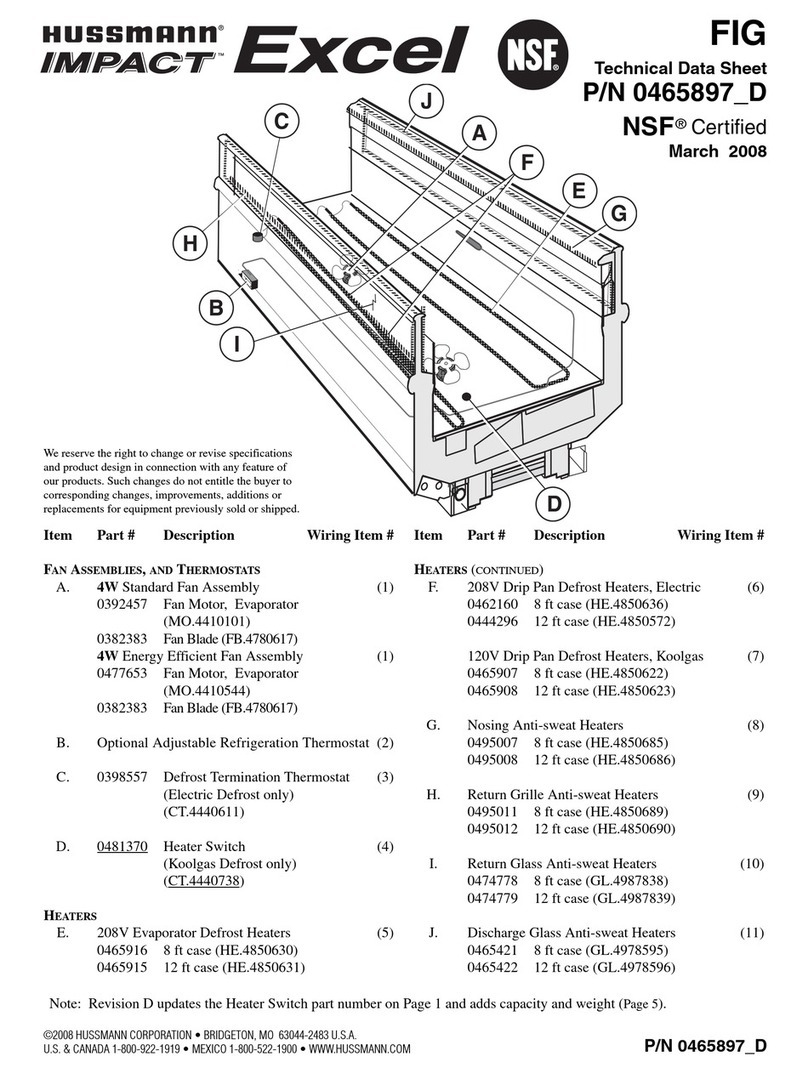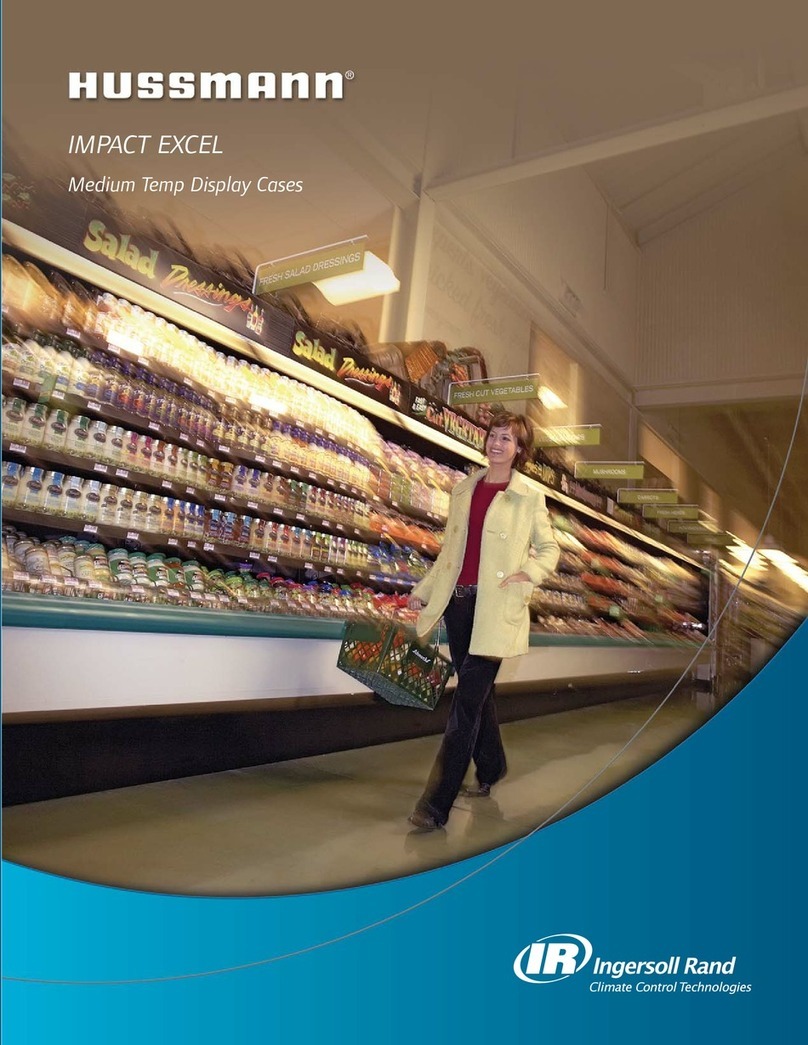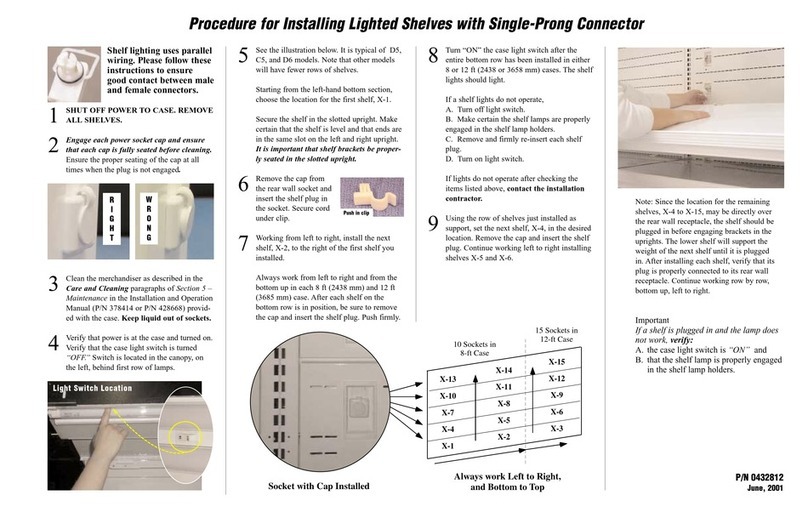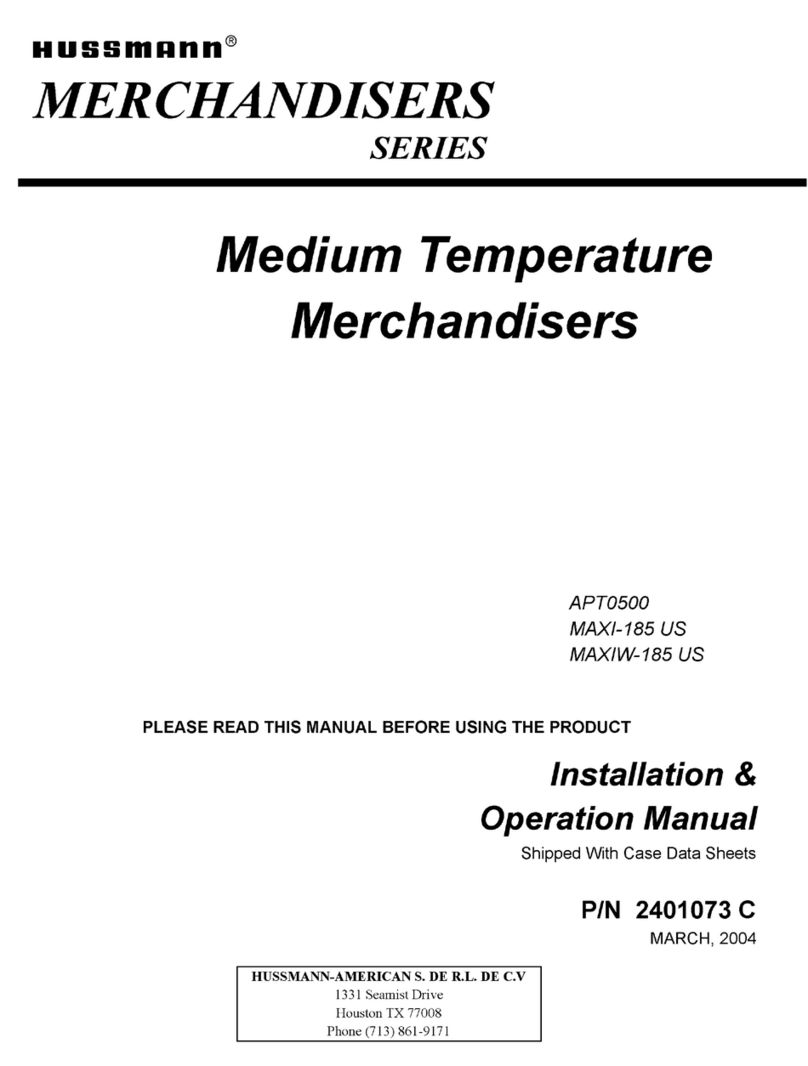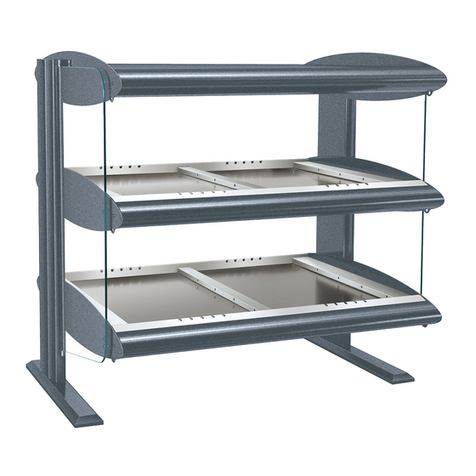
Aspen 2 TCPW-TCBM
05060055 00 30/08/2007 9
I mobili rispondono ai requisiti essenziali richiesti dalle seguenti direttive:
- Direttiva Macchine 98/37 CEE;
- Direttiva Compatibilità elettromagnetica 89/336 CEE e successive modifiche 92/31 CEE,
93/68 CEE;
- Direttiva Bassa Tensione 2006/95/CE e successiva modifica 93/68 CEE.
5. Identificazione - Dati di targa (Fig. 2)
Sul retro del mobile è presente la targa matricolare con tutti i dati caratteristici:
1 Nome ed indirizzo del costruttore
2 Nome e lunghezza del mobile
3 Codice del mobile
4 Numero di matricola del mobile
5 Tensione di alimentazione
6 Frequenza di alimentazione
7 Corrente a regime assorbita
8 Potenza elettrica assorbita
9 Potenza elettrica a regime assorbita nella fase di sbrinamento (Cavi caldi+ventilatore
evaporatore)
10 Potenza di illuminazione (ove prevista)
11 Superficie di esposizione utile
12 Tipo di fluido frigorigeno con cui funziona l’impianto
13 Massa di gas frigorigeno con cui è caricato ogni singolo impianto
14 Classe climatica ambientale e temperatura di riferimento
15 Classe di protezione contro l’umidità
16 Numero della commessa con cui è stato prodotto il mobile
17 Numero d’ordine con cui è stato messo in produzione il mobile
18 Anno di produzione del mobile
Per l’identificazione del mobile, in caso di richiesta di assistenza tecnica, è sufficiente comunicare:
- il nome del prodotto(Fig. 2 - 2);
- il numero di matricola(Fig. 2 - 4);
- il numero di commessa(Fig. 2 - 18).
6. Il Trasporto (Fig. 3)
Il mobile è provvisto di un supporto in legno fissato alla base per la movimentazione con carrelli a
forca.
Utilizzare un carrello elevatore a mano o elettrico idoneo al sollevamento del mobile in questione.
7. Ricezione e prima pulizia
Al ricevimento del mobile:
- Assicurarsi che l’imballo sia integro e non presenti danni evidenti;
- Curare l’operazione di disimballo in modo da non arrecare danno al mobile;
- Controllare il mobile in ogni sua parte verificando l’integrità dei suoi componenti;
- In caso si riscontrino dei danneggiamenti chiamare immediatamente la società di fornitura;
- Procedere ad una prima pulizia utilizzando prodotti neutri, asciugare con un panno morbido, non
usare sostanze abrasive o spugne metalliche.
Per un corretto smaltimento dell’imballo tenere presente che è composto da:
- Legno - Polistirolo - Politene - PVC - Cartone.
Ai sensi della direttiva CEE 94/62 si dichiara l’idoneità dei materiali sopra citati.
8. Installazione e condizioni ambientali (Fig. 3)
Per l’installazione attenersi a quanto segue:
- Non posizionare il mobile:
in ambienti con presenza di sostanze gassose esplosive;
all’aria aperta e quindi agli agenti atmosferici.
- Togliere i supporti in legno alla base (utilizzati per il trasporto) e montare i piedini regolabili (Rif. 2)
posizionandoli in modo tale da portare il mobile in orizzontale aiutandosi con una livella (Rif. 1) per
controllarne l’assetto.
